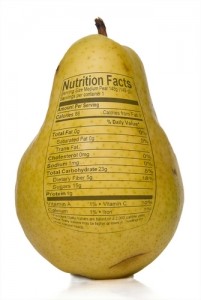
Recently, the Food Safety and Inspection Service, a division of the U.S. Department of Agriculture, released a new set of guidelines regulating procedures for meat, poultry and processed egg product producers.
“Our mission as a public health agency is to protect America’s most vulnerable populations, including children, from harm, and these new guidelines do just that,” said USDA Deputy Under Secretary for Food Safety Al Almanza in a statement. “Beyond keeping our families safe, these guidelines also provide a useful tool to help food companies avoid preventable, costly recalls.”
Included in the report is a section called the “Big Eight,” detailing common food allergens and specific. Food items in each category. The Big Eight are crustacean shellfish, eggs, fish, milk, peanuts, soybeans, tree nuts and wheat. According to FSIS, these eight allergens account for 90 percent of all food allergy reactions in the U.S.
New Food Allergen Guidelines
The report covers techniques for prevention and control measures for potentially allergic ingredients. Such as packaging, labeling, storage, checklists, allergen training and others. FSIS wrote that adherence to these guidelines will help producers to perform. A more accurate accounting of ingredients, which should lead to fewer outbreaks.
According to the report, the number of food recalls for FSIS regulated products resulting. From undeclared allergenic ingredients rose from just seven in 2008 to 29 in 2012.
This sharp upturn in recalls caused FSIS to re-evaluate its guidelines. After conducting a preliminary study, the organization began visiting every. Establishment it regulates nationwide this past April to discuss the newly proposed procedures. Now that the report is out, FSIS will be increasing its inspections to ensure. That the guidelines are being followed and promote the importance of proper food labeling.
These food allergens affect millions of Americans. According to the Centers for Disease Control and Prevention, an estimated 2 percent. Of adults and between 4 and 8 percent of children in the U.S. have food allergies.
While intentionally misrepresenting a product’s ingredients is against the law, many of the. Occurrences are due to negligence or poor practices. In facilities that manufacture a variety of different products, it’s very easy for. One of those. Big eight allergens to get somewhere they aren’t supposed to. While many smaller manufacturers don’t have large processing plants. It’s important to adhere to these guidelines so that ingredients are accurately record.
With an industrial label printer, food labeling can reflect the values and aspirations of a food manufacturer. Contact us today to learn more about how taking control of your label strategy can provide new opportunities. For marketing and engagement.
 Visit our US Store
Visit our US Store Visit our Canadian Store
Visit our Canadian Store US Customers
US Customers
 US Customers
US Customers Follow us on facebook
Follow us on facebook Follow us on twitter
Follow us on twitter Follow us on linkedin
Follow us on linkedin Follow us on youtube
Follow us on youtube Follow us on google+
Follow us on google+ Pinterest
Pinterest
Leave a Reply